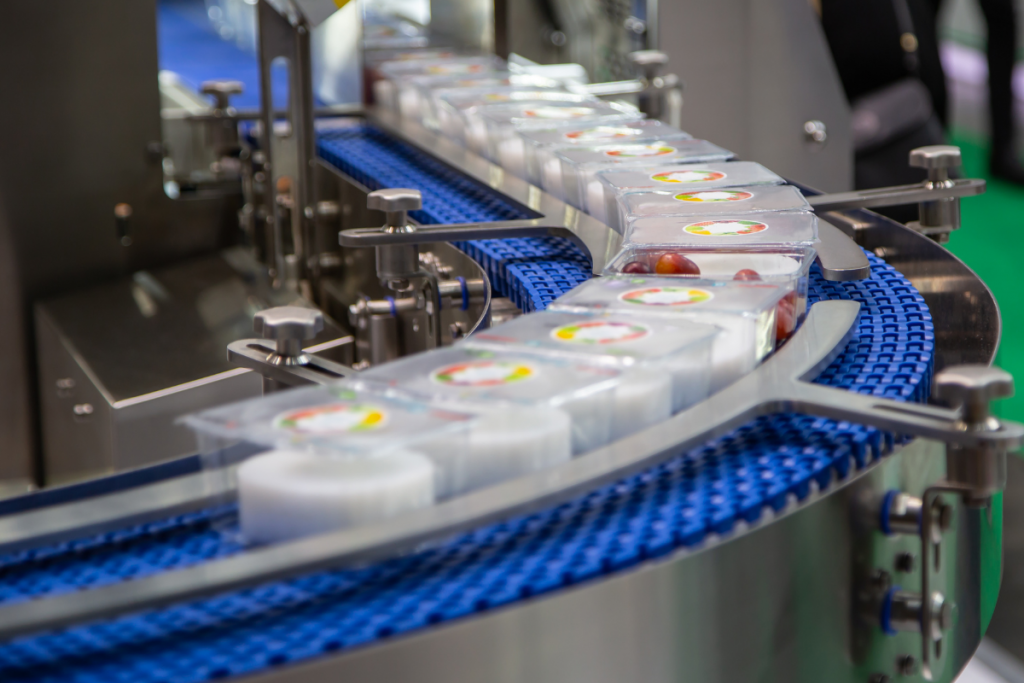Food and beverage companies have seen a major increase in demand for their products in the past few years. The COVID-19 shutdowns changed consumer habits: Instead of dining out or ordering takeout, consumers spent more money having their groceries delivered, making their own meals at home and discovering new food and beverage products.
This increase in demand is driving many food manufacturers to consider automating their packaging processes to improve efficiency. However, choosing the right level of automation takes time and research. There is no one-size-fits-all approach, since the level of implementation will impact your initial costs as well as your return on investment.
Barriers to automation
Historically, the biggest barrier for most food processing plants interested in automating their packaging process has been the steep cost.
“Robotics and automation technology aren’t new, but you wouldn’t find these in most food industry plants outside of the largest, most financially backed locations just a few years ago,” according to Concept Systems.
However, costs have decreased in the last decade due to new technology, improving the return on investment for installing these time-saving machines. The Robotic Industries Association found that in 2021 food and consumer manufacturers increased their robotics orders by 56% over the prior year — proof of the growing trend.
Manual Packaging vs. Full-scale automation or Hybrid-Automation
Before deciding between a manual or mechanical packaging process, food and beverage companies should consider the fully loaded cost of employing line workers, including their salary, benefits, vacation and sick time. While workers can be cheaper than automation, factoring in fewer quality control issues with automation and less time lost due to staffing issues, such as turnover, sick leave, injuries and other unpredictable absences, may tip the scale.
There are different ways to employ automation on your packaging line. You can use machinery at virtually every step — be it case packing, labeling or palletizing — or you can opt for a semi-automatic approach to packaging.
Robots and cobots
A recent survey on robotics adoption by Automation World found that 44.9% of respondents currently use robots as part of their assembly and manufacturing facility’s operation. More specifically, of those with robots, 34.9% have adopted collaborative robots (cobots), while the remaining 65.1% use only industrial robots.
Cobots are a more cost-effective alternative to industrial robots since they don’t need industrial-level electricity. However, you still need an operator on your packaging line to help them function, which means you won’t be eliminating labor costs altogether.
How to pinch a few pennies
There are ways to offset some automation costs by identifying areas where your food processing plant could tighten the belt. For instance, the cost of corrugated and solid fiber box manufacturing products alone reached an all-time high in February 2022. You can save money by choosing wraparound case packaging instead. You can also opt to use a case packer to increase capacity.
Perhaps, the single most time- and money-saving tip you can implement is to create a maintenance schedule to keep your machinery running smoothly and ensure your packaging line is efficient.
Checklist to complete before hiring an AEC firm
If you want to design a more efficient packaging line, architecture, engineering and construction (AEC) companies like Stellar can help you get the most bang for your buck. However, they will need specific information to determine the cost of automating your particular packaging line.
To get a more accurate quote, here are some of the things to consider and information you will need to gather before reaching out to an AEC firm:
- Draft a document with details on your entire packaging process: case packer, labeler, film wrapper, palletizer, etc.
- Determine the number of stock keeping units (SKUs).
- Write down the size of your product(s).
- Document the type of packaging you use (metal, paper, plastic or other).
- Determine how many of your production lines need automating and how many employees are currently needed to work each line and how many hours they are in operation.
- Write down any details pertaining to your production speed and output quantity, as well as any specific challenges you hope to overcome.
Need more data to make a decision?
Many facilities can track this operations-related data in real time. However, smaller operations may not have access to all of this vital information. That’s not a problem. Stellar can tie equipment into enterprise resource planning (ERP) software to help identify areas of need in your plant and draft an automation plan that works for your business.
A great deal of packaging automation is product-dependent. Finding the ideal packaging approach that works for your food processing plant takes time but is essential to helping your business thrive.
Looking for specific guidance on how to optimize the packaging process at your facility? Email us at foodforthought@stellar.net or give us a call at 800.488.2900.



